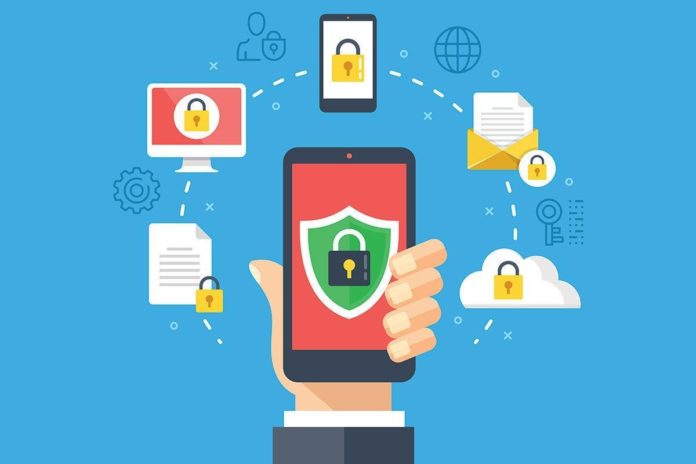Want to know how to enhance privacy on your Android phone? Start with the basics. Consider using encryption, limiting your app permissions, and disabling connections. These measures can be implemented on any Android device, regardless of its manufacturer or operating system. This article will give you the lowdown on each. After reading it, you should have the confidence to implement these steps. Keep reading to learn how to enhance privacy on your Android phone.
Encryption
One of the best ways to protect yourself and your personal information from prying eyes is to encrypt all data on your mobile phone. By using encryption, data on your phone becomes useless or unreadable. While software and hardware vulnerabilities are constantly being discovered, even an experienced attacker can break through a simple lock screen password and access sensitive data. Encryption increases security while reducing the loading time, but it also makes your phone slower to log into. Encryption is not available for all Android phones.
The latest Android OS releases can help you protect your private information with encryption. This means that only you can view the data you share with other people. Google can’t see the data stored in your phone, even if they have your phone number. Additionally, the data stored on your phone is encrypted with the password from your Google account. Moreover, if you use Google’s services, you can disable their backup service by disabling it in Settings – Backup & Reset, or Manual Backup.
To ensure your privacy and security, you can install encryption on your Android phone. This will prevent the device from reporting your location to other users. If you’re worried about your device being tracked, you can use an open source alternative like CalyxOS. This OS is also very secure and hardened, and is compatible with the Xiaomi Mi A2 phone and Pixel. There are many other options to choose from. To find the best options, visit Alternatives to Google Products.
Before you go ahead and install encryption on your Android phone, you should ensure that the apps you use are the most secure. Make sure to use secure email apps like Proton Mail or ProtonMail. You should also avoid installing apps from Google, as these have a reputation for spying on users. This way, you can still receive email, but you won’t have to worry about other people knowing that you’re using the device.
Limiting app permissions
If you’re worried about your personal information getting out to strangers, limit app permissions on your Android phone. Apps asking for permissions to access your camera, microphone, location, and other features can put your information at risk. For example, AccuWeather requests camera access find the weather. Barcode apps also need camera access. Almost all apps-request permissions to access multiple features. Despite this, most requests are perfectly legitimate. To make your Android phone even safer, limit the permissions of apps that you use often.
You can also limit the amount of data apps can access. Apps can access your location via GPS and record audio. You can also limit how much data an app can access by turning off some of these features in Settings. However, disabling these permissions can be difficult if you work for a company sensitive about your personal information. Instead, you can set the permissions of individual apps to only access the information they need.
When installing apps on your Android phone, it’s important to limit their access to your location. Android 12 offers more control when it comes to location. Some apps use your location to create a profile and display ads. By default, Android will store location settings under the location menu. To change your location settings, go to the privacy screen and scroll through the list of apps that recently used your location. You can turn off location access for all apps, or limit it for specific apps.
To limit the amount of information, an app can access on your Android phone, go to the Settings menu, and select the App Permissions option. You can then adjust the permissions of individual apps by tapping their name. You can also set the permissions on individual apps by deleting them. Once you’ve deleted or uninstalled an app, you can restore it with its permissions. These settings can make it possible for apps to share data with third-party services, but they won’t be as detailed as you’d like.
Using a VPN
Using a VPN app for your android is a good way to protect your privacy on the go. You can access virtually any website in any country, whether it’s in the United States or in another country, by using a VPN. However, there are many benefits to using a VPN to enhance privacy on your android phone, from streaming services to blocking P2P files. VPNs will allow you to access blocked content and stream music and videos and ensure that no one knows you’re using a VPN to protect your privacy.
To get started with using a VPN app for Android phone, you must first unlock your device. From there, open the Google Play store app and go to the network settings tab. From there, select “More.” Click on “Advanced protocols and modifications” and then enter the name of your VPN. Once you have selected your VPN, click on the + button in the top right corner of the screen. You should be able to find it easily and enter the name of the VPN.
Once you’ve selected your VPN, the next step is to choose the right service. Look for a service that offers high speed, strong encryption, and no logging policy. Most mobile VPNs charge about $10 a month. While some free services exist, they’re usually slow and have inconsistent speeds. A VPN is a good investment to ensure your privacy and security while browsing the internet.
A VPN can also help you access online content that’s only available in other countries. The internet is full of content that is only available in a few countries, and VPNs can help you access the best of it. By masking your IP address, you can access 15 Netflix libraries from around the world. If you’re a frequent traveler, this can be especially useful. In addition to encrypting your data, VPNs also keep you safe from hackers.
Disabling connections
If you use a lot of applications on your Android phone, you should disable them all or at least turn off certain ones. For instance, Google apps open all files on your phone. Google has a reputation for spying on users. So you should opt for secure email apps such as Proton Mail. Other common apps that request location data include WhatsApp, Gmail, and Facebook. You should disable them all or at least select the most secure ones.
Another way to protect yourself online is to change your Android phone’s operating system. Most devices are built with the core functionality of Google. However, most devices make their own “flavor” of Android. In fact, most mainstream Android versions share data with Google. So, if you want to protect your privacy on Android, you should install a non-Google version. Disabling Google apps and internet browsing cookies is a great way to protect yourself against tracking from the start.
Enabling two-factor authentication
Adding two-factor authentication (also known as 2FA) to your Android phone can help you improve security. It allows you to use your phone’s security features to confirm your identity whenever you visit a website. It works by requesting you to enter a code from your phone, either via an authentication app or through SMS/text messages. Once you have received the code, enter it in the website’s login form to complete the process.
When logging into your Google account, you can choose to set up a two-factor authentication on your Android phone. The best way to do this is to set up a passcode on your device, which is usually found on your home screen. This will enable Duo to verify your identity if someone attempts to log into your account without your password. By default, Android will display notifications on the lock screen. If someone happens to be looking at your device, they will be able to view your messages and personal information.
Once you have enabled MFA, you should have a backup method of verification. This could be another phone number or authentication app. You can find this in your phone’s Settings>Security area. Some devices may allow you to skip MFA altogether. If you don’t want to use Google’s MFA service, you can turn off two-factor authentication on selected devices.
Changing app permissions is another way to ensure that no one can access your personal information. In Android versions after KitKat, you can easily adjust the permissions of apps and select whether they should access your location. You can also choose whether you want to allow only certain apps to access your location. The best way to protect your information is to keep it out of the hands of others, and make sure you don’t leave your Android phone windows open.









